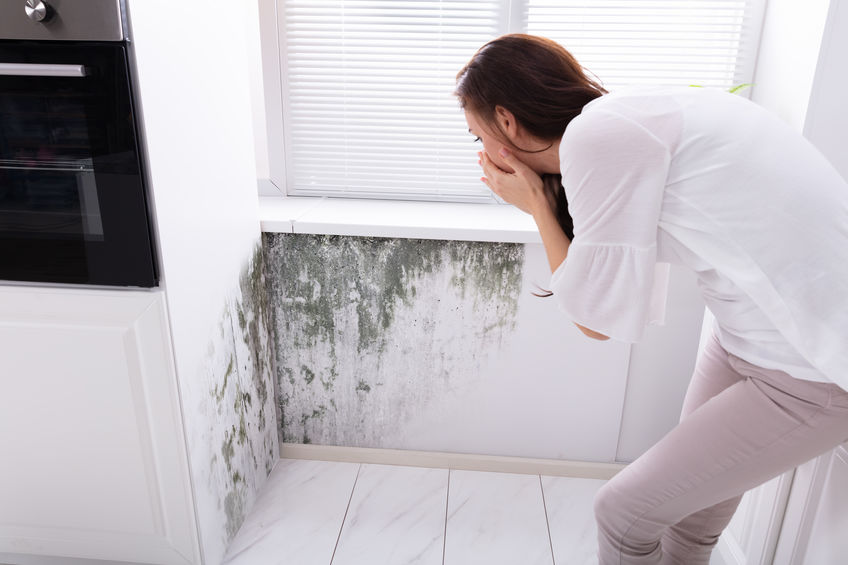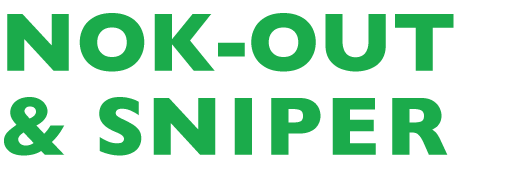How to Remove Mold and Mildew With SNiPER Disinfectant

What is Mold, Anyways?
Mold and mildew are naturally occurring fungi which serve as “nature’s recycler” by helping break down dead materials. SNiPER is a highly effective and efficient fungicide! Mildew is a thin, white to blue-green growth that is caused by spores that connect with moisture on a hard or porous surface. Molds grow throughout the natural and built-up environment. Tiny particles of mold are ever-present in indoor and outdoor air. Live spores act like seeds, forming new mold growths (colonies) when they find the right conditions. Black mold is very common and can be quite dangerous! Big News: bleach does not kill mold or the spores. That’s right! All this time you have been told that bleach kills mold but actually, it only weakens the mold and changes its color. SNiPER, on the other hand, is an EPA registered fungicide! You can use SNiPER to safely remove mold and mildew in your home.
What Does Mold Need to Grow?
Being nature’s little recycler, mold is amazing. It only needs 3 things to grow – water, nutrients, and a surface. When these three things are available for more than 48 hours, you will find the beginnings of mold growth, pretty much anywhere. In some cases, excessive humidity is sufficient to get the growth of musty smelling fungus going in that old overstuffed sofa from grandma’s house.
The single most important factor to control the growth of mold, mildew and fungus is – control the water. Take care of the water issue and mold growth stops dead. Control the water to remove mold!
Where Does it Grow?
Mildew grows in damp, warm, poorly aired, poorly lit places, such as in cellars, basements, and closets; on shower curtains and shower stalls; and under houses. Almost anything can provide sufficient nutrients to feed mold and it can grow almost anywhere.
Why Not Use Bleach to Kill Mold?
It is a common idea that bleach kills mold. This is not true. Bleach does not kill mold. It will only weaken it, and make it change color. Bleach does not kill spores. Additionally, bleach is unsuitable for indoor use because of toxicity issues. Outside, bleach may be useful because it can cause a color change.
Should I Be Concerned About Mold in My Home?
Yes! Besides looking unsightly, mildew has an unpleasant, musty odor. If permitted to grow, mildew will discolor and rot surfaces such as fabrics, wood, leather, and paper. Mold should not be permitted to grow and multiply indoors. Breathing in the spores in high concentrations is dangerous to health. Some kinds of black mold are highly toxic. You should definitely remove mold growing in your home as soon as possible.
Will Mold in My Home Make My Family Sick?
Exposure to molds can affect health. People are mainly exposed by breathing spores or other tiny fragments. People can also be exposed through skin contact , and by eating mold contaminated food. The most common health problems caused by indoor mold are allergic reactions. People who are allergic or sensitive to mold commonly report nasal and sinus congestion, coughing, wheezing/breathing difficulties, sore throat, or skin and eye irritation. Exposure to mold can trigger asthma attacks, may suppress the immune system and have other deleterious health effects.
How Do I Tell if I Have a Mold Problem?
Investigate, don’t test! The most practical way to find a mold problem is by using your eyes to look for mold growth, and by using your nose to locate the source of a suspicious odor. If you see mold, or if there is an earthy or musty smell, you should assume a mold problem exists. Other clues are signs of excess moisture or the worsening of allergy-like symptoms.
Look for visible mold growth (may appear cottony, velvety, granular, or leathery and have varied colors of white, gray, brown, black, yellow, green). Mold often appears as discoloration, staining, or fuzzy growth on the surface of building materials or furnishings. When mold is visible, testing is not recommended.
Search Areas With Noticeable Mold Odors
Look for signs of excess moisture or water damage. Look for water leaks, standing water, water stains, condensation problems. For example, do you see any watermarks or discoloration on walls, ceilings, carpet, woodwork, or other building materials?
Search behind and underneath materials (carpet and pad, wallpaper, vinyl flooring, sink cabinets), furniture, or stored items (especially things placed near outside walls or on cold floors). Sometimes destructive techniques may be needed to inspect and clean enclosed spaces where mold and moisture are hidden; for example, opening up a wall cavity.
Can I Use Bleach to Kill Mold?
NO! The idea that bleach kills mold is simply false. You cannot remove mold with bleach. Bleach will cause the mold to change color, but it does not kill either mold, or mold spores. Bleach is known to produce toxic byproducts when used for cleaning. Add to this that bleach is a known toxin to humans and pets. It can cause severe allergic effects and can harm skin and eyes. You really do not want family or pets to come into direct contact with bleach or their toxic residues.
Remove Mold For a Safe Home
Identify and fix the Moisture Problem: the most important step in solving a mold problem is to identify and correct the moisture sources that allowed the growth in the first place. Common indoor moisture sources include:
- Condensation (caused by indoor humidity that is too high or surfaces that are too cold)
- Movement through basement walls and slab
- Roof leaks
- Plumbing leaks
- Overflow from tubs, sinks, or toilets
- Firewood stored indoors
- Excessive Humidifier use
- Inadequate venting of kitchen and bath humidity
- Failure to vent clothes dryer exhaust outdoors, (including electric dryers)
- Line drying laundry indoors
- House plants. Watering them can generate large amounts of moisture
Indoors
To keep indoor surfaces as dry as possible, try to maintain the home’s relative humidity between 20-40 percent in the winter and less than 60 percent the rest of the year. Ventilation, air circulation, dehumidification and efforts to minimize the production of moisture in the home are all very important in controlling high humidity that frequently causes mold growth.
In General
Begin drying all Wet Materials: As soon as possible, begin drying any materials that are wet. Use fans and dehumidifiers and move wet items away from walls and off floors.
Remove and Dispose of Mold Contaminated Materials: Items which have absorbed moisture (porous materials) and which have mold growing on them need to be removed, bagged and thrown out. Throw away vacuum cleaner bags because they may contain moisture as well as mildew-producing fungi.
Clean Surfaces: Surface mold growing on non-porous materials such as hard plastic, concrete, glass, metal and solid wood can usually be cleaned. SNiPER™ can also be used to remove mold from fabric surfaces, such as carpet and upholstery. Cleaning must remove and capture the mold contamination, because dead spores and mold particles still cause health problems if left in place.
Using SNiPER™, thoroughly scrub all contaminated surfaces with a stiff brush until there is no visible evidence of mold and mildew.
Sponge excess liquid with a clean, dry towel, or a vet/dry vacuum, mop or sponge. There is no need to rinse. Use fans or dryers to speed up the drying process.
SNiPER is Gentle to Your Home Environment
There are 4 areas of toxicity that the EPA rates all disinfecting products on: to skin, to eyes, to lungs and if ingested. SNiPER receives the lowest toxicity rating that the EPA gives out – in all 4 categories! In addition, SNiPER is non-corrosive and non-abrasive so it won’t hurt surfaces in your home. All these things together make SNiPER the prefect product to remove mold and mildew in your home. Buy some today so you will have it on hand when you need it! Remove Mold and odor with SNiPER.
Questions?
If you have any questions regarding how to apply Nok-Out, or SNiPER® check out our How To Articles or, call Ted Price toll free at 866.551.1927.
